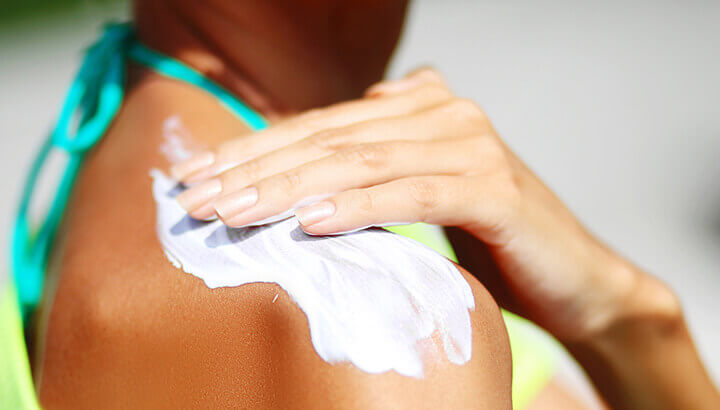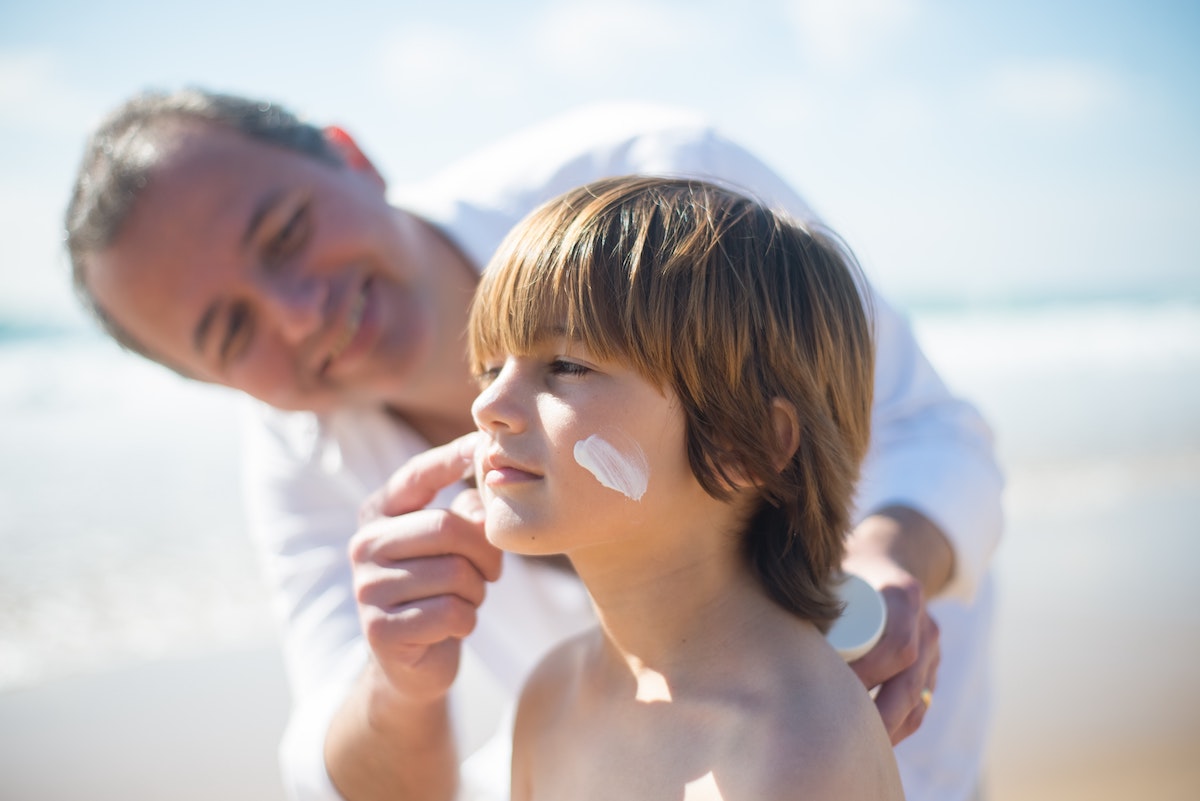With warmer weather here, people all over are gearing up for poolside gatherings, beach vacations, and some good ol’ fashioned sun-soaking. The sun just seems to make us feel good, and rightly so. The sun is necessary for all human life. Without the warming rays of this massive star, life on this planet would cease to exist. Every type of living creature, including mankind, needs sunlight in order to live. Humans have been exposed to the sun since the beginning of time.
Is sun exposure good or bad?
However, for more than 30 years, doctors, beauty experts, health officials, and skincare product manufacturers have sent out strong warnings regarding the dangers of the sun. We have been told to avoid any sun exposure without sunscreen because the rays will damage our skin and cause skin cancer.
Much of this hype has been due to the fact that skin cancer is on the rise. In 2002, over 50 percent of the 1.2 million cases of cancer in the United States were skin cancers, and 10,000 of these cases were fatal. These statistics have injected a rampant fear of the sun into many unassuming people, who have decided to stay clear of the burning ball of light at all costs. This, however, has caused problems of its own.
Does the sun cause cancer?
To say that the sun causes cancer is not entirely correct. It is actually a great oversimplification of the truth. Well-researched and documented studies show that vitamin D optimization may actually prevent up to 16 different types of cancer.
Because of our fear of the sun, we have become a nation deficient in vitamin D. This deficiency in itself has led to a surge in a number of debilitating conditions such as depression, obesity, hypertension, and cancer. In addition, 60 percent of people with diabetes are vitamin D deficient, and studies show very low levels of vitamin D in children, women, and the elderly.
It appears, to at least some extent, that the dangers of the sun have been overemphasized while the benefits have been minimized. Dr. William Grant conducted a study that revealed that 30 percent of cancer deaths could be prevented each year if vitamin D levels were higher. That’s right: the very thing that so many hide from may not cause cancer, but rather protect from it.
Furthermore, vitamin D is also essential for a number of healthy bodily functions, such as muscle strength, cardiovascular health, strong teeth, optimal blood pressure, and a healthy immune system — to name just a few.
Does sun exposure cause melanoma?

Good rays, bad rays
In order to completely understand the risk that the sun poses to our health, we must better comprehend the sun itself. The sun gives us two main types of wavelengths — UVA and UVB. While both can cause tanning and burning, UVB rays are necessary for the skin to make vitamin D, while UVA rays penetrate the skin deeply and can cause severe free radical damage including wrinkles. They also destroy vitamin D.
It only takes a little sun to make vitamin D
To encourage your body to produce vitamin D, you don’t need to spend countless hours in the hot sun and you most definitely don’t want to burn. Here are a few general guidelines to follow to help you get the most from the sun’s helpful rays while staying safe from those that can cause damage.
- If you are just getting out in the sun for the first time in the season and have white skin, limit yourself to about 15 minutes between the hours of 10 a.m. to 4 p.m.
- If you burn frequently, limit your time to a few minutes each day until your skin begins to slightly darken.
- Once you have a nice tan, you can increase the time you spend in the sun.
- Use a moisturizing non-SPF lotion to help keep your skin soft. If you use an SPF lotion it will block out the beneficial UVB rays. Organic coconut oil is a great option.
- After your initial exposure, spend the rest of the day in the shade or covered up.
- If you have to be in the sun for an extended period of time, use an SPF 15 non-toxic sunscreen.
Is sunscreen bad for you?
When you slather on sunscreen that does not offer natural UVA protection, you are doing nothing short of wasting your money. Sunscreen that blocks UVB rays and does not protect from UVA rays and will work against you by limiting vitamin D production and damaging skin.
There are two main types of sunscreens — chemical and physical. Chemical sunscreens prevent sunburn when they absorb UVA rays, but can increase the risk of cancer. Physical sunscreens contain inert minerals that reflect ultraviolet rays away from the skin. They are considered safe and effective.
Most of what you find in the store are chemical sunscreens, which may contain from three to six of the following active ingredients: oxybenzone, avobenzone, octocrylene, homosalate, octinoxate, and octocrylene.
Almost all products contain avobenzone – the agent for filtering out skin-damaging UVA rays. There is some concern, however, that this substance may break down when exposed to the sun. Other chemicals, such as octocrylene, are often added as stabilizers.
Dangers of using sunscreen

Studies done on a number of the chemicals found in commercial sunscreen indicate that they may disrupt hormones. Animal research also suggests that oxybenzone (found in 80 percent of chemical sunscreen) and octinoxate are toxic to reproductive systems and can interfere with development. While more testing is yet to be done, many are concerned that the high level of toxicity found in these active ingredients may undermine any benefit that this type of sunscreen offers. Like personal care products, sunscreens penetrate the skin and deserve special attention. Studies done at the University of Zurich found sunscreen chemicals in 85 percent of milk samples. Four of the chemicals that were found are commonly used in American sunscreens.
Sunscreens that contain vitamin A, or retinol, may actually speed the development of skin tumors and lesions when sunlight is present, according to a 2009 study done by the National Toxicology Program. The Food and Drug Administration (FDA) published a study in 2011 that concluded the same thing. Since this time, consumer advocates have been urging the FDA to restrict the use of vitamin A in topical products.
Avoid spray-on sunscreens
Vitamin A and toxic chemicals are not the only things you have to worry about in sunscreen. In July of 2012, a very scary incident occurred for one man who applied aerosol sunscreen and immediately walked over to his barbecue. Upon lighting the grill, he sustained second-degree burns, because the sunscreen had not had time to set into his skin, and the propellant chemicals didn’t have adequate time to evaporate. According to news reports, the spray also left a vapor trail that added insult to injury. He caught on fire immediately after lighting the grill.
Banana Boat, the makers of the aerosol sunscreen in question, voluntarily recalled their product after hearing of the incident. The company cited a problem with the spray valve as being the reason for the accident.
“The spray valve opening on the affected products dispenses more than is typical in the industry for continuous sun care sprays. As a result, the product is taking longer to dry on the skin than is typical with other continuous sprays. If a consumer comes into contact with a flame or spark prior to complete drying of the product on the skin, there is a potential for the product to ignite.”
Mothers of young kids, and many other people of all ages, love the ease of application that aerosol offers, as well as the fact that spray sunscreen makes it easy to cover all of the hard-to-reach spots.
Dangers of aerosol sunscreens

Besides the fact that aerosols are highly flammable, there are more concerns with this type of sun protection. First, the Food and Drug Administration has mounting concerns that aerosol sunscreens can be inhaled during application. Both the propellant chemicals and the nanoparticles of zinc oxide and titanium dioxide (found safe in other forms) worry scientists, who say that these particles are easily ingested.
Although the particles can’t be absorbed through the skin, they can accumulate in different organs in the body once they are ingested. Because they are so small, they can move freely throughout the body, causing problems at the sub-cellular level. What is worse is that the body can’t get rid of them.
Each time the sunscreen nozzle is pressed, these particles are transported some 20 feet in all directions, landing on everything in sight. Everyone in the danger zone gets to breathe in the dangerous particles, even if they don’t want to. Use caution with loose powder sunscreens as well for the same reason; they contain particles that could end up in the lungs and cause damage.
There are presently no recommendations or guidelines set by the U.S. government regarding the size and characteristics of nanoparticles to protect from the sun and be safe to users at the same time. As with other personal care products, this is a “caveat emptor” circumstance where consumers must do their own research with regard to safety.
How to stay safe in the sun
Playing it safely requires forethought. Obviously, the sun is a very important part of health, one that should not be ignored. However, there are rules:
- Playing or laying all day in the hot sun without any protection and getting burned to a crisp must be avoided at all costs.
- Be especially careful with young children; avoid sunburn as much as possible.
- Try to stay in the shade between the hours of 12 and 3 p.m. — this is when the sun’s rays are the hottest and can cause the most damage.
- Wear lightweight, white clothing if possible, and a hat if you have to be in the sun for long periods of time.
- Avoid tanning beds.
- Never tan through a window — you will get all UVA rays and none of the beneficial UVB rays.
Check the label on your favorite sunscreen
The Environmental Working Group urges us not to use sunscreen as a tool to prolong time spent in the sun, and to check our skin often for irregular moles or other suspicious spots. Being choosy about the type of sunscreen that you use for yourself and your family is critical. The best is one made from natural ingredients that protect you from damaging rays, don’t break down on the skin, and allow at least some penetration of UVB rays for the production of vitamin D.Visit The Environmental Working Group for a list of safe sunscreens which contain non-toxic ingredients and offer protection from damaging UVA rays without compromising UVB exposure.



